One mole of oxygen undergoes a cyclic process in which volume of the gas changes 10 times within the cycle as shown in figure. The processes AB and CD are adiabatic while processes BC and DA are isochoric. What is the efficiency of the process ?

In the cyclic process the efficiency of cycle can be given as
η=1−∣∣∣QoutQin∣∣∣…(3.113)
As the process CD and AB are adiabatic, no heat exchange takes place in these processes. In isochoric process BC as temperature increases, the heat is taken in which is given as
Qin=nCV(TC−TB)
=52R(TC−TB) ..(3.114)
[As n=1 mole and for O2CV=52R ]
Similarly in isochoric process A as temperature decreases heat is rejected by the gas, which is given as
Qout=nCV(TD−TA) [ Magnitude of heat rejected ]
=52R(TD−TA) ..(3.115)
From equation -(3.113),(3.114) and (3.115) , we have
Efficiency η=1−TD−TATC−TB ...(3.116)
As we know in an adiabatic process the volume and temperature of gas in initial and final states are related as
T1Vγ−11=T2Vγ−12
Here we use the same relation for processes CD and AB as
TCVγ−10=TD(10V0)γ−1
or TC=(10γ−1)TD ..(3.117)
and TBVγ−10=TA(10V0)γ−1
or TB=(10γ−1)TA ..(3.118)
Now from equation-(3.116), (3.117) and (3.118), we have
Efficiency η=1−(TD−TA)(10)γ−1TD−(10)γ−1TA
or =(1−110γ−1)
=1−1100.4 [As for O2,γ=1.4 ]
=0.6 = 60%
Topper's Solved these Questions
- BOOK - PHYSICS GALAXY - ASHISH ARORACHAPTER - THERMODYNAMICS LAWS & SPECIFIC HEATS OF GASES EXERCISE - Discussion Question17videos
THERMODYNAMICS LAWS & SPECIFIC HEATS OF GASES
- BOOK - PHYSICS GALAXY - ASHISH ARORACHAPTER - THERMODYNAMICS LAWS & SPECIFIC HEATS OF GASES EXERCISE - Conceptual MCQs Single Option Correct21videos
THERMODYNAMICS LAWS & SPECIFIC HEATS OF GASES
- BOOK - PHYSICS GALAXY - ASHISH ARORACHAPTER - PHOTOELECTRIC EFFECT AND MATTER WAVESEXERCISE - Unsolved numerical problems42videos
PHOTOELECTRIC EFFECT AND MATTER WAVES
- BOOK - PHYSICS GALAXY - ASHISH ARORACHAPTER - WAVE OPTICSEXERCISE - Unsolved Numerical Problems28videos
WAVE OPTICS
Similar Questions
Knowledge Check
- Question 1 - Select One
Two moles of an ideal gas goes under the process shown in figure. AB and CD are reversible adiabatic process.

The gas under the process isAMonoatomicBDiatomicCNon linear polyatomicDMixture of mononoatmic and non-linear polyatomic - Question 2 - Select One
Which process is identical with the cyclic process shown below ? If AB and CD are adiabatic process.
 A
A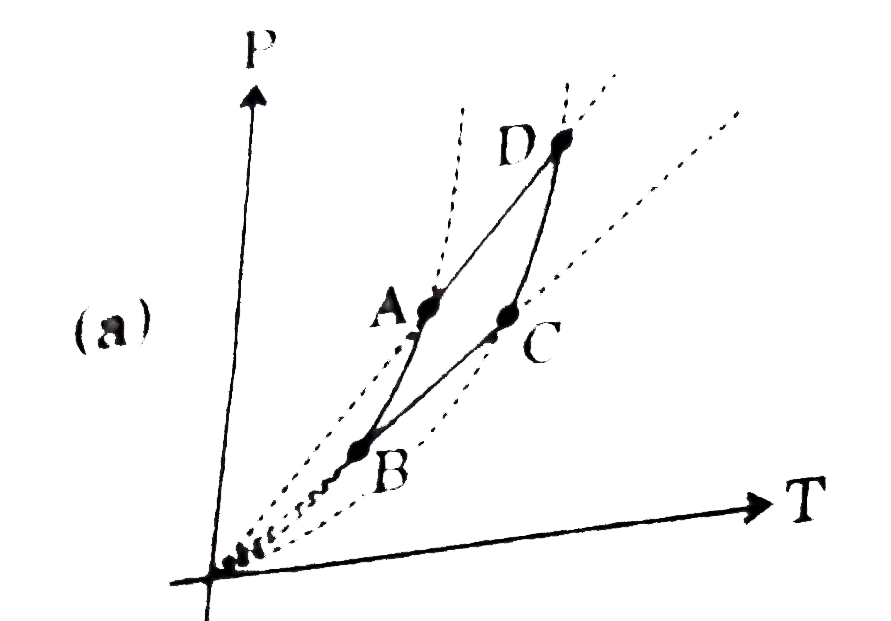 B
B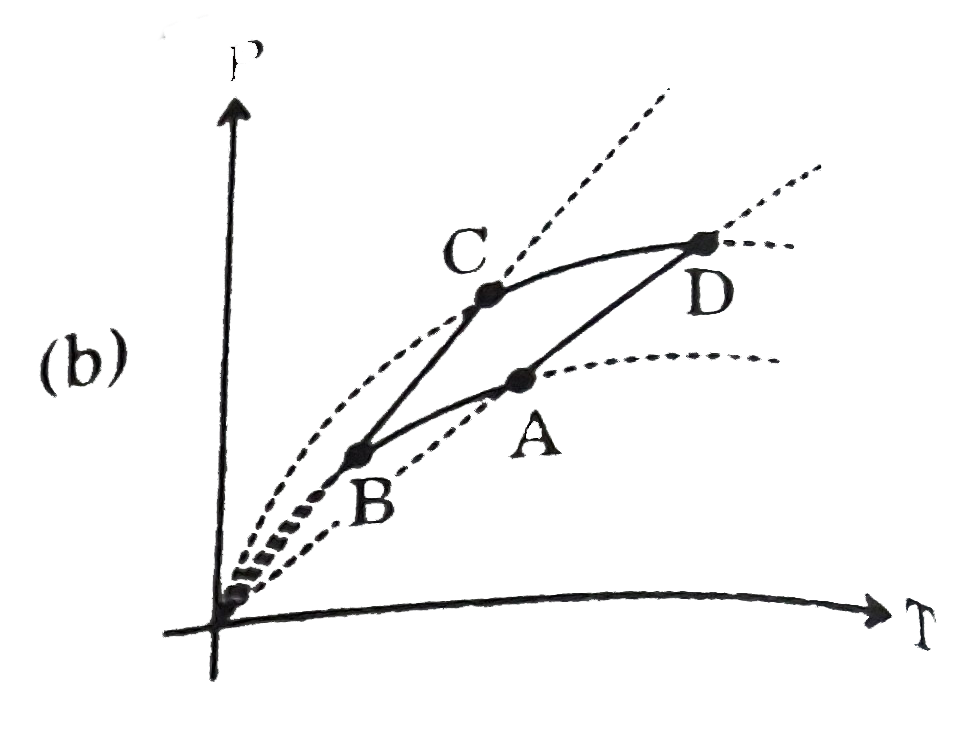 C
C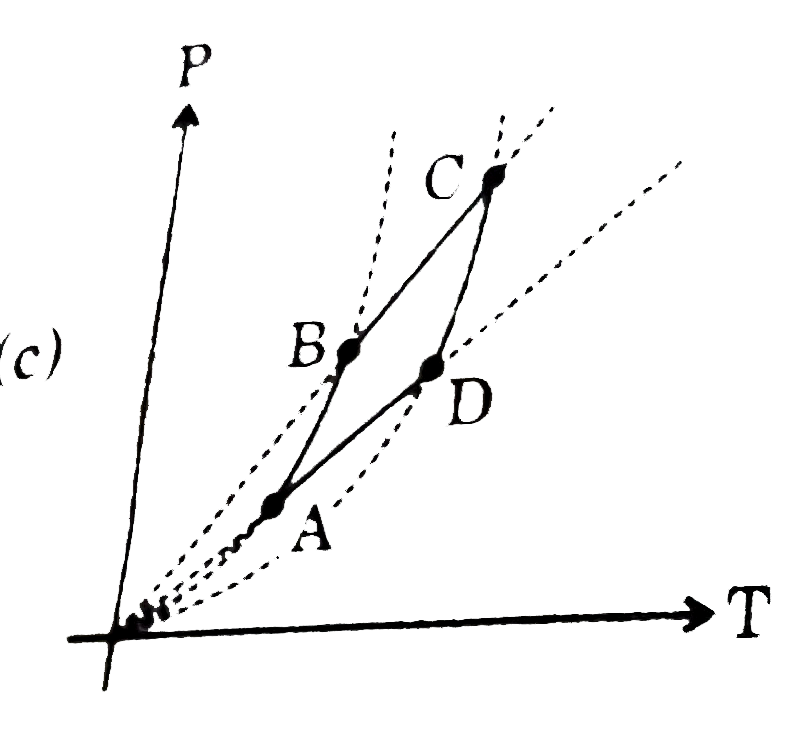 D
D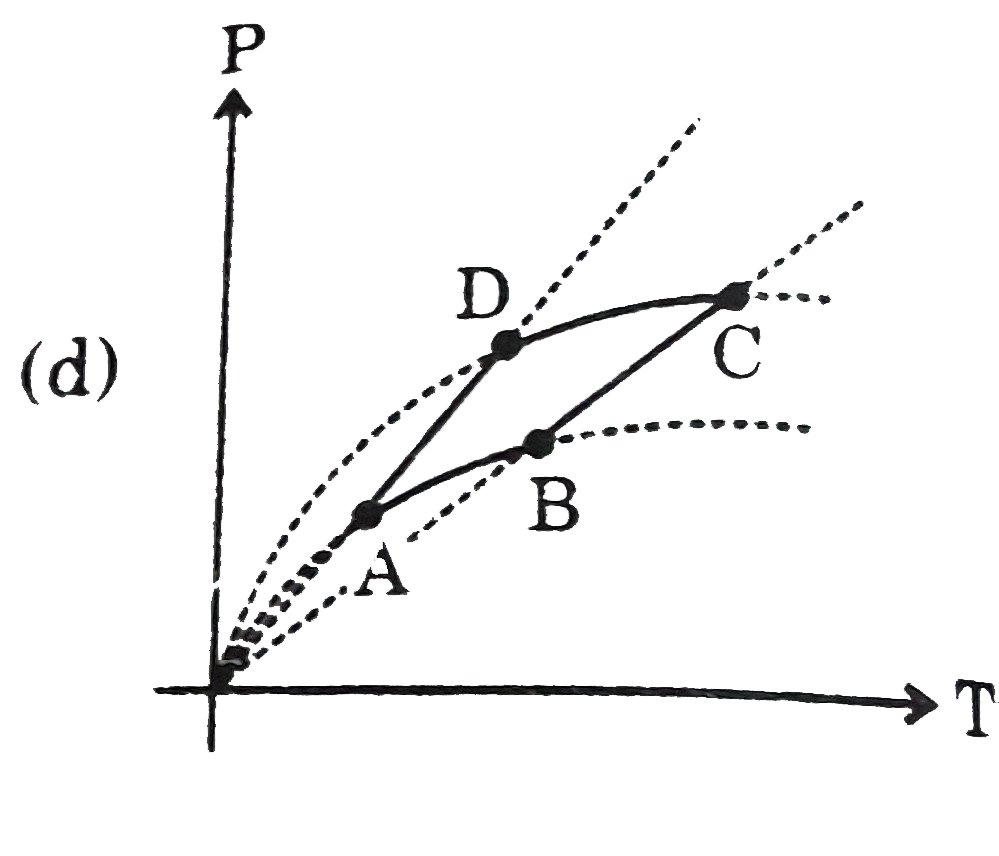
- Question 3 - Select One
In the cyclic process shown in the figure, the work done by the gas in one cycle is
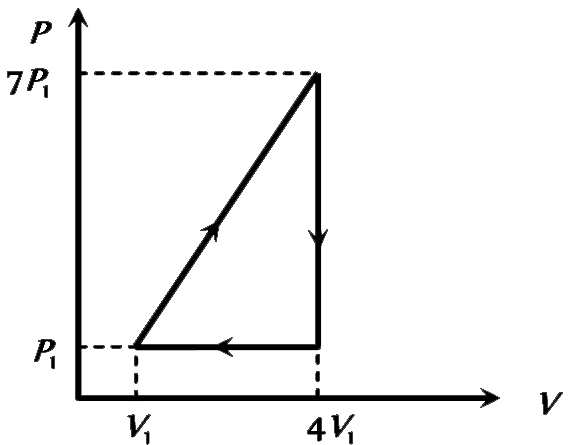 A28P1V1B14P1V1C18P1V1D9P1V1
A28P1V1B14P1V1C18P1V1D9P1V1
A fixed mass of oxygen gas performs a cyclic process ABCA as shown. Find the efficiency of the process.
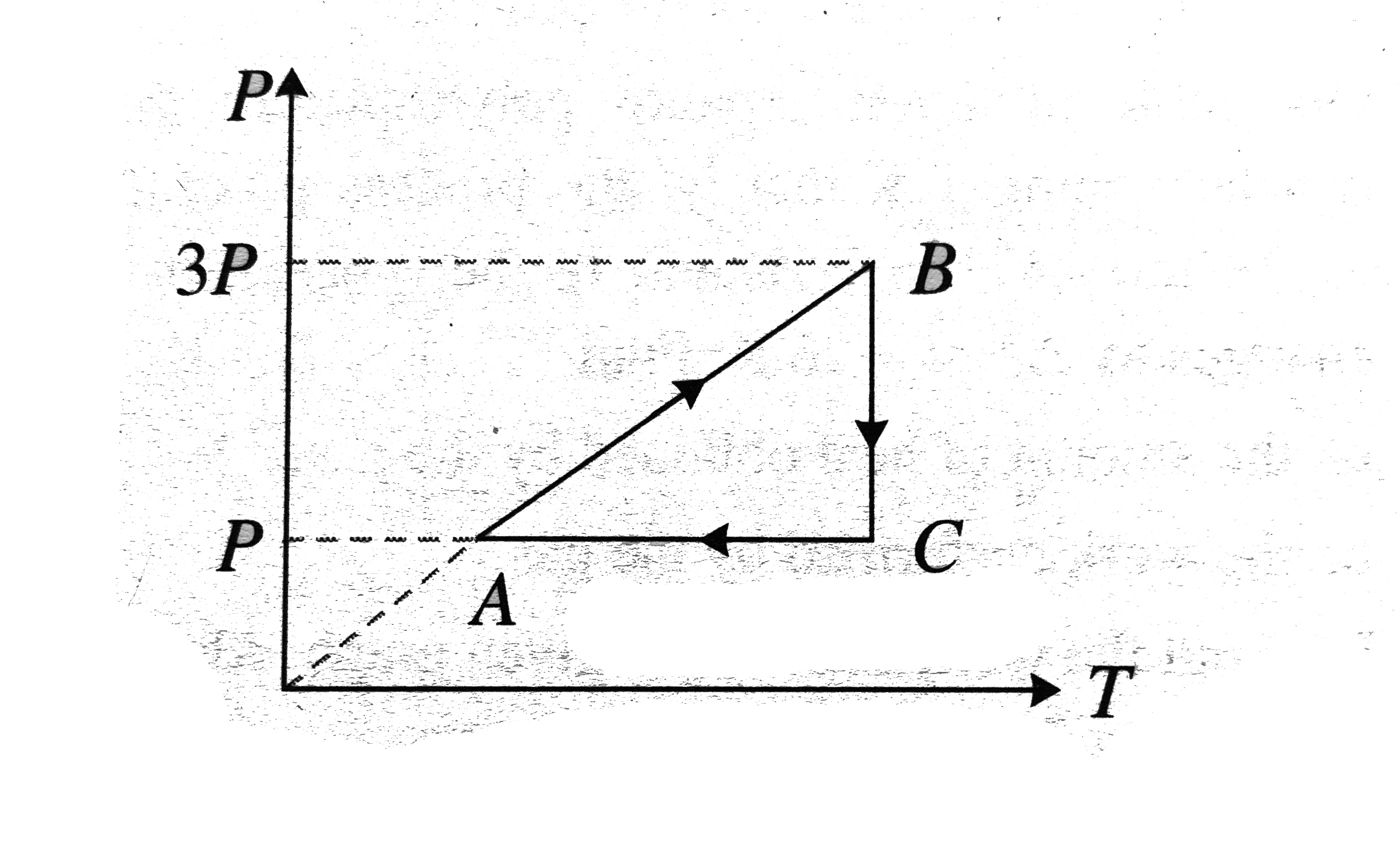 View Solution
View SolutionOne mole of an ideal gas undergoes a cyclic change ABCD. Calculate from the diagram. (P is in atm, and V in litre)
(i) Work done along AB, BC, CD and DA.
(ii) What is the net work done in the process ?
(iii). What is the efficiency of the process ?
(iv) What is the net change in internal energy of the gas ?
Given 1atm=1.01×105Nm−2View SolutionTwo moles of an ideal gas goes under the process shown in figure. AB and CD are reversible adiabatic process.

The efficiency of the cycle isView SolutionIn the cycle ABCD shown in the figure, the volume increases by times while the absolute temperature increases threefold. The processes AB and CD are isothermal. If the working substance is a monatomic gas, then efficiency of the cycle is
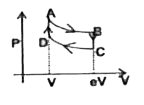 View Solution
View SolutionOne mole of an ideal monoatomic gas undergoes a cyclic process as shown in figure. Then the change in the energy in expanding the gas from a to c along the path abc is:
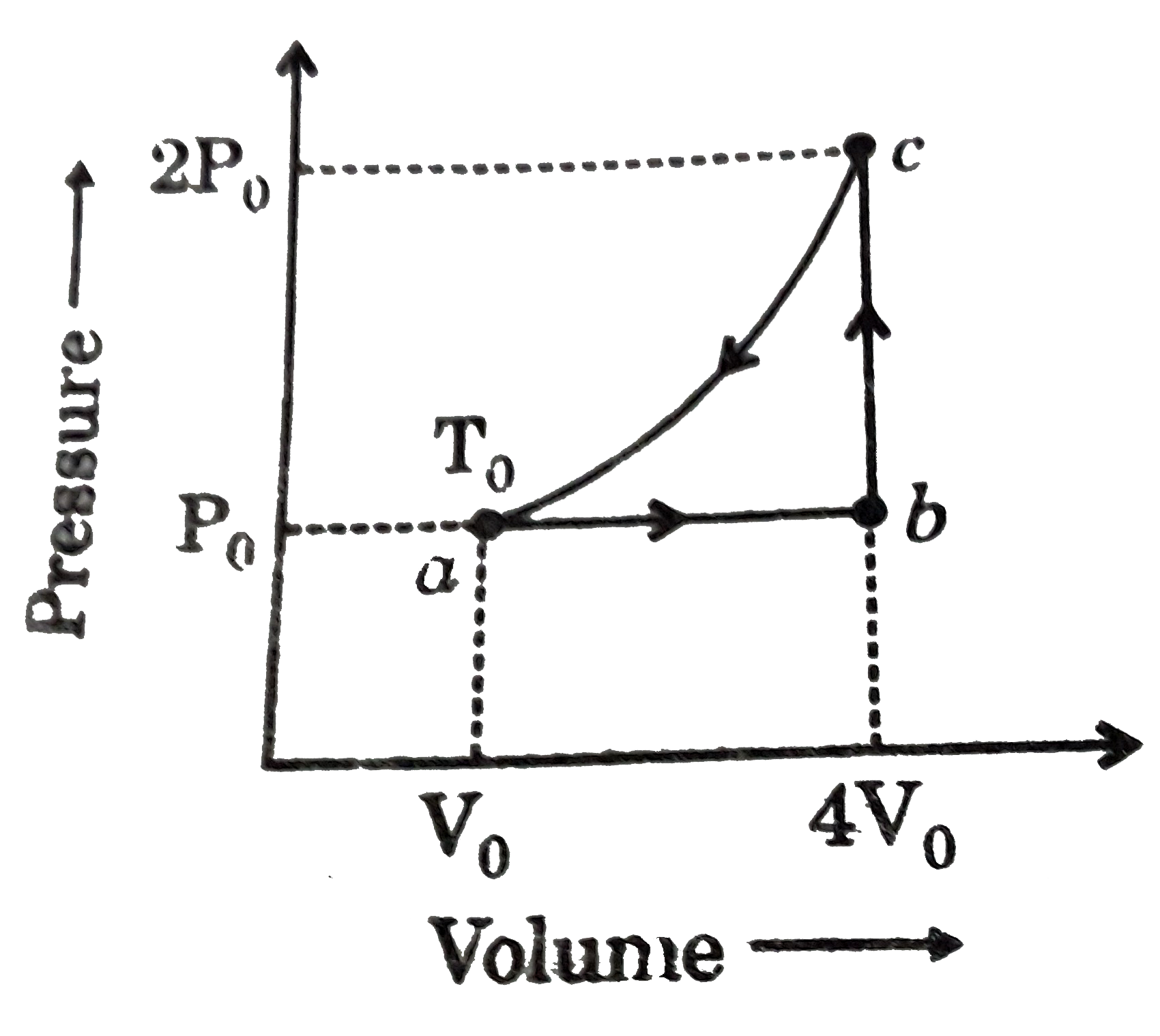 View Solution
View Solution

